Relax in Nature and Tour Some of Kyoto’s Photogenic Locations
Time required : Two days
- Japanese Culture
- Outdoor
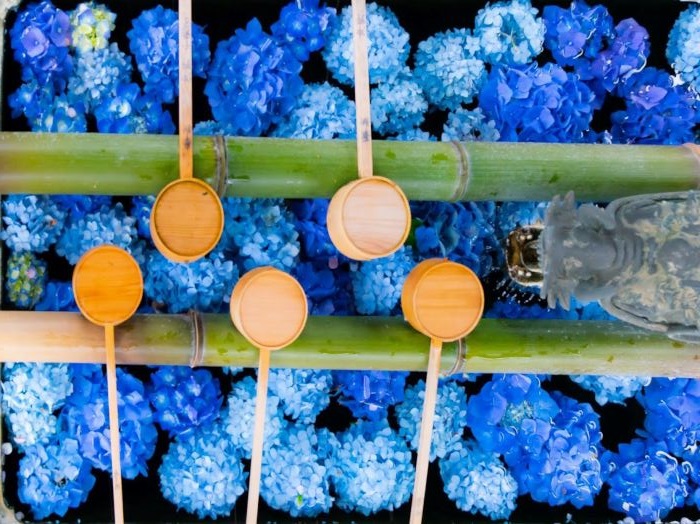
This itinerary begins following some sightseeing in nearby Nara, famous for its historical temples and shrines amongst natural settings. Today, we're setting out to explore some of southern Kyoto's photo-worthy locations, with some breaks in relaxing, nature-filled spots. From Nara Station, head first to beautiful Gansenji Temple, known for its vermillion three-storied pagoda in the mountain forest, as well as gorgeous hydrangeas that are beautiful around June. Next, head to Keihanna Commemorative Park for a relaxing stroll through its landscape garden, as well as access to a variety of activities and seasonal charms. From there, it's on to Uji for some delightful matcha sweets, and the World Heritage site Byodoin Temple. On day two, rent a bicycle and head to eastern Kyoto's bamboo forest for some wonderful sights, and some tea time. After a final stop for more exquisite hydrangea at Yokoku-ji Temple, be sure to try the local specialty of bamboo shoot macarons!
Day 1
JR Nara Station
15 min. by train
JR Kamo Station
16 min. by bus
1Gansenji Temple
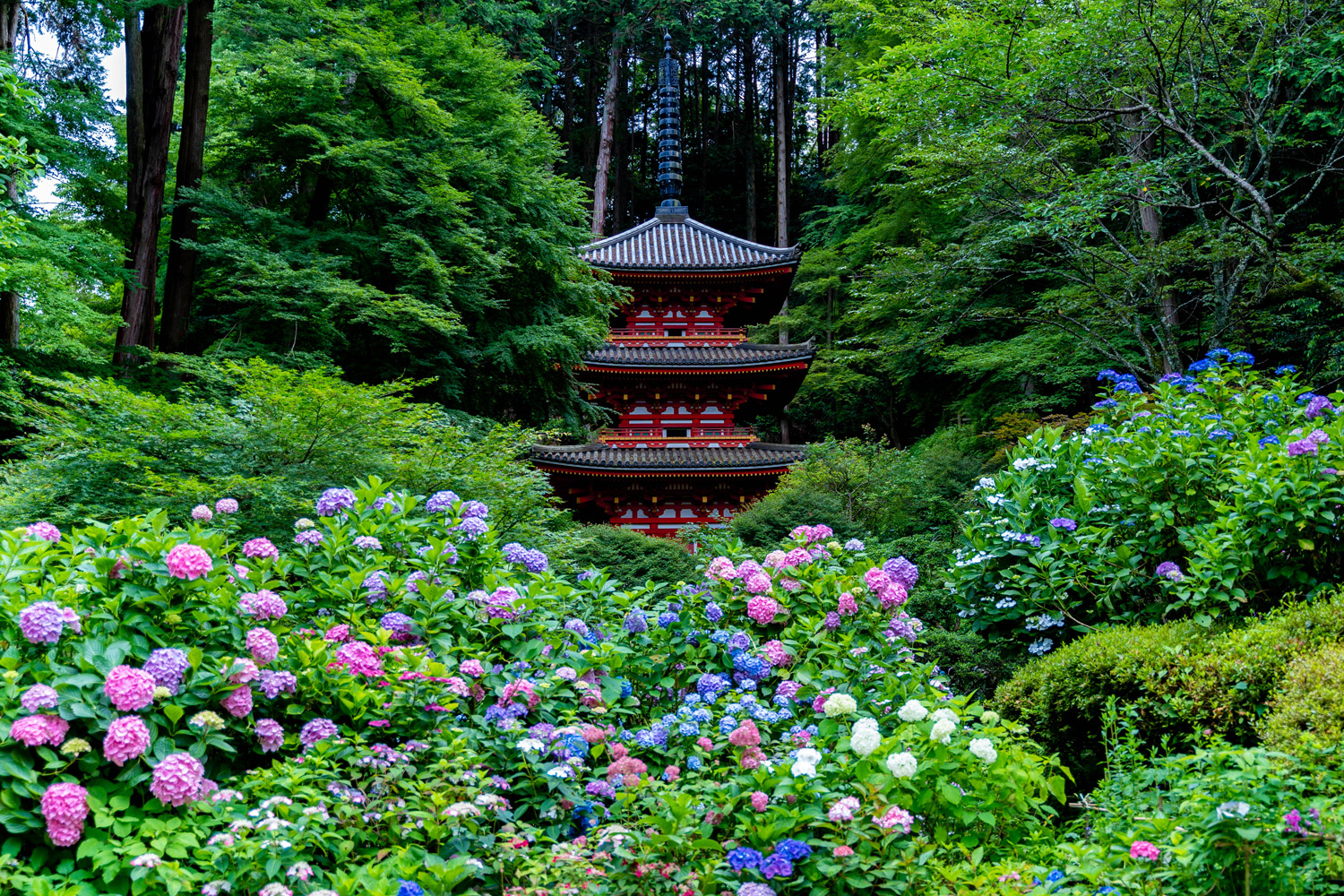
Gansenji Temple is an ancient Buddhist temple in Kamo-cho, Kizugawa City, the southernmost part of Kyoto Prefecture. It’s located in the tea-producing region of Kyoto. The temple was founded in 729. The name "Gansenji" translates literally to "Rock Boat Temple," and near the entrance of the temple is a boat-shaped rock, where legend has it that monks used it for sacred cleansing rituals. In the temple precincts, the Three-storied Pagoda, the Important Cultural Property, stands surrounded by nature. It looks dignified and mystic, and its wooden demon carvings are very interesting. The temple is famous for its hydrangeas that are beautiful around June. After the hydrangeas, water lilies and crape myrtle blossoms follow, and fall foliage is impressive as well. In the cold season, you can see vivid camellia flowers and pretty plum blossoms, and in the spring, cherry blossoms are amazing. The temple is also adorned by a variety of other flowers, and is truly a sight to see in any of the four seasons. Gansenji Temple’s wooden statue of Seated Amida Nyorai is about three meters tall, and the gentle, sublime expression brings comfort to viewers. You’ll be overwhelmed as you imagine the original appearance from the whole statue’s golden glow and the faint vermilion paint remaining on the clothes even after a thousand years. The serene aura of the enlightened Amida Nyorai is captivating, and there is another awesome statue, Fugen (Samantabhadra) Bodhisattva riding a white elephant. This statue was restored in December 2024 for the first time in 113 years. As a side note, paths connecting Gansenji Temple and Joruriji Temple called Sekibutsu no Michi (paths with stone Buddhas) are a great place for hiking through history where you can meet many stone Buddhas.
- Tel
- 0774-76-3390
- Address
- 43 Iwafune Kaminomon, Kamo-cho, Kizugawa City, Kyoto
- Access
- -From Kamo Station (JR Kansai Line, Yamatoji Line), take Kizugawa City Community Bus towards Kamoyamanoie for about 16 minutes, and get off at Gansen-ji Temple.
-From JR Nara Station or Kintetsu Nara Station, take Nara Kotsu Bus (bound for Shimo-sagawa/Hirooka) for about 18 minutes, get off at Gansenjiguchi, and walk for about 25 minutes.
16 min. by bus
JR Kamo Station
22 min. by train
JR Hosono Station
10 min. by bus
2Keihanna Commemorative Park
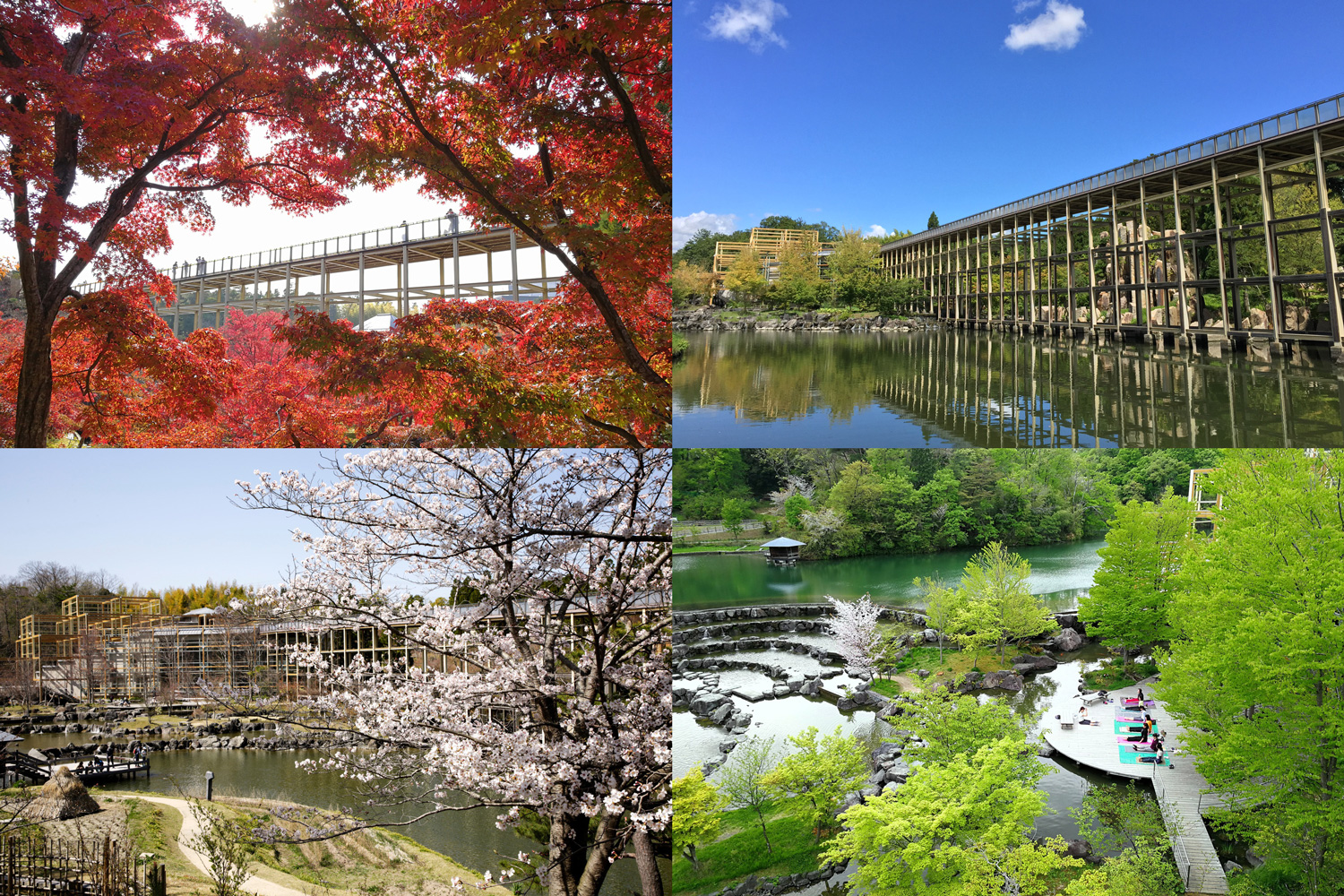
The Keihanna Commemorative Park, officially called the Kyoto Prefectural Kansai Culture and Science City Commemorative Park, is 24.1 hectares in size. It was built to commemorate the establishment of the Keihanna Science City (officially known as the Kansai Science City), and opened to the public in 1995. It has a free area and a paid area. The free area includes Hiroba (Open Space), which has a large, stepped lawn area resembling a tanada (rice terrace), where people can relax and children can run and play freely. There is also a free playground for kids. In the Taniai (Valley) area, you can view a typical Japanese landscape with a small stream, a bamboo grove, and a plum garden. In the paid area, there is Suikei-en, a Japanese-style garden with paths that bring you to fascinating spots including a cascading pond, a magnificent Rock Cluster, beautiful places with seasonal flowers, and Floating Stage where you can feed Japanese carp. It’s enjoyable for children and adults alike. Kangetsukyo Bridge is eye-catching. It’s 123 meters long, 4 meters wide, and approximately 10 meters tall above the water. From the bridge, you can enjoy the panoramic view of the large garden. Particularly spectacular is the fall foliage of the Maple Valley. Among the moss, approximately 140 Japanese maple trees line a small, delicate stream. Suikei-en is a wonderful place where you can view both satoyama (cultivated countryside) landscapes, and the large and beautiful bridge. Also, at Mebuki-no-Mori (Budding Tree Forest), you can enjoy strolling through abundant nature, which offers different scenery depending on the season. Additionally, you can enjoy a range of events, from firefly-viewing and star-gazing to traditional Japanese events.
- Tel
- 0774-93-1200
- Address
- 6-1 Seikadai, Seika Town, Soraku-gun, Kyoto
- Access
- Bus:
-From Hosono Station (JR Gakkentoshi Line) or Shin-Hosono Station (Kintetsu Kyoto Line), take Nara Kotsu Bus (#36, 46, 47, or 56) for about 9 minutes, and get off at Keihanna-Kinen-koen.
-From Gakken-Nara-Tomigaoka Station (Kintetsu Keihanna Line), take Nara Kotsu Bus (#56) towards Hosono Sta. for about 18 minutes.
For Suikei-en (Japanese garden), get off at Koen-Higashi-dori.
Car:
-Take the Keinawa Expressway. From the exit at Seika-Gakken Interchange, take Seika-odori (the main road) west for about 1km.
-Take National Route 163. At the Inuidani-nishi intersection, turn north and drive for about 2km. Then, turn right and take Seika-odori (the main road) for about 300m.
-Take Prefectural Road 22, Yawata-Kizu Road. Then, take Seika-odori (the main road) west for about 2.2km.
10 min. by bus
JR Hosono Station
35 min. by train
JR Uji Station
3Nakamura Tokichi Honten Main Store
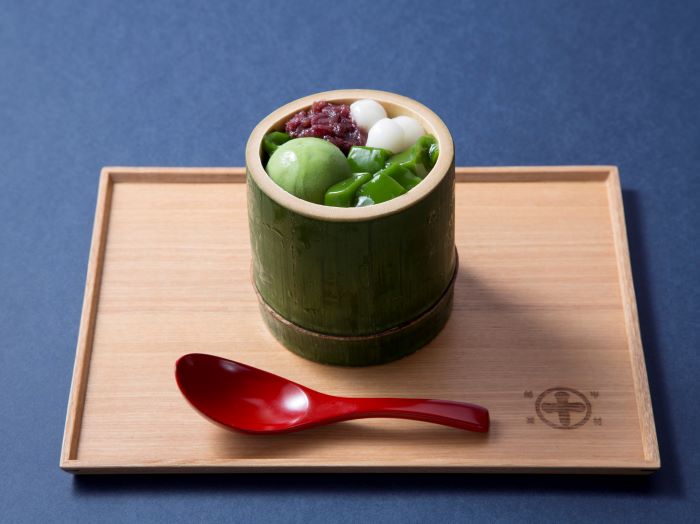
Nakamura Tokichi Honten was founded in 1854. With over 170 years of history, it is currently run by the seventh generation of the family. Today, it is especially famous for its delicious sweets using authentic matcha green tea, making it a must-visit for those with a sweet tooth. Nakamura Tokichi Honten has expanded from Kyoto into Osaka and Tokyo, with six locations in Kyoto. The Nakamura Tokichi Honten Main Store (the first Nakamura Tokichi Honten) is located about a minute's walk from JR Uji Station. The old buildings have been preserved for over 100 years, which are designated as a part of Important Cultural Landscape. The cozy cafe is a renovated old tea factory. In the garden, there is an imposing Horai Funamatsu, an about 250-year-old pine tree designated as one of the 100 famous trees of Uji City. From the cafe terrace, you can enjoy the wonderful garden view with tea. Their teas and desserts are particularly popular here! “Tea Jelly [Matcha]” is among them. The jelly encapsulates the flavor of tea blended with a secret ratio, served with matcha ice cream, shiratama (chewy rice dumplings), and sweet red bean paste. Their “Maruto Parfait [Matcha]” is another popular way to enjoy this delicious jelly. In addition to the matcha, the jelly menu also includes “Tea Jelly [Hojicha],” made with roasted tea. These luxurious desserts are served in photogenic bamboo cups, which are used exclusively at this main store. If you seek a memorable tea experience in Uji, you can savor the rich flavor of Uji tea here. This is a must-visit for tea lovers.
- Address
- 10 Uji Ichiban, Uji City, Kyoto
- Access
- About 1 min. on foot from Uji Station (JR Nara Line)
About 10 min. on foot from Uji Station (Keihan Uji Line)
8 min. walk
4Byodoin Temple
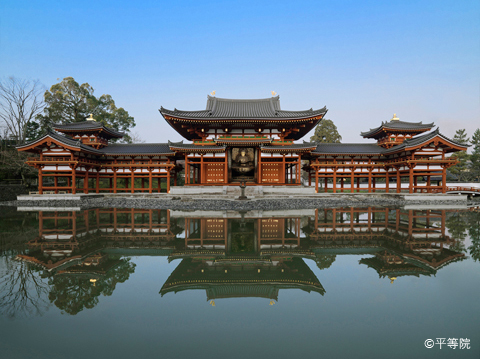
Byodoin Temple, located on the west bank of the Uji River, shows the historical glory of the Fujiwara clan's prosperity. Originally Minamoto no Toru’s villa, it was later acquired by Fujiwara no Michinaga, and his son Yorimichi converted it into the temple in 1052. The Phoenix Hall (Hou-ou-do), which is a National Treasure, appears to float on the Aji-ike Pond. The pond extending in front of the building is a characteristic example of Heian Period (794-1185) gardens. However, the Phoenix Hall and its surrounding garden together represent something far more profound. It is the Heian aristocrats' aspiration to be reborn in Gokuraku Jodo (the Pure Land in Buddhism). The belief that such a beautiful world awaited them held great significance for them. The Phoenix Hall enshrines Amida Buddha (Amida Nyorai). The hall is a familiar sight in Japan, being depicted on the 10 yen coin. At the Byodoin Temple Museum “Hoshokan,” a collection of precious artifacts owned by the temple is on display. It includes valuable National Treasures: a pair of Phoenix, 26 Statues of the Praying Bodhisattva (Buddhist Saint) on Clouds, and 1 Temple Bell. Also, the museum offers restored footage generated through computer graphics utilizing state-of-the-art digital technology.
- Tel
- 0774-21-2861
- Address
- 116 Uji Renge, Uji City, Kyoto
- Access
- About 10 min. on foot from Uji Station (JR Nara Line)
About 10 min. on foot from Uji Station (Keihan Uji Line)
JR Uji Station
Day 2
JR Uji Station
35 min. by train
JR Mukomachi Station
3 min. walk
Muko City Sightseeing Community Center Machiteras MUKO (Rent a shared bicycle)
15 min. by bicycle
5Take-no-Michi (The Muko Bamboo Path)
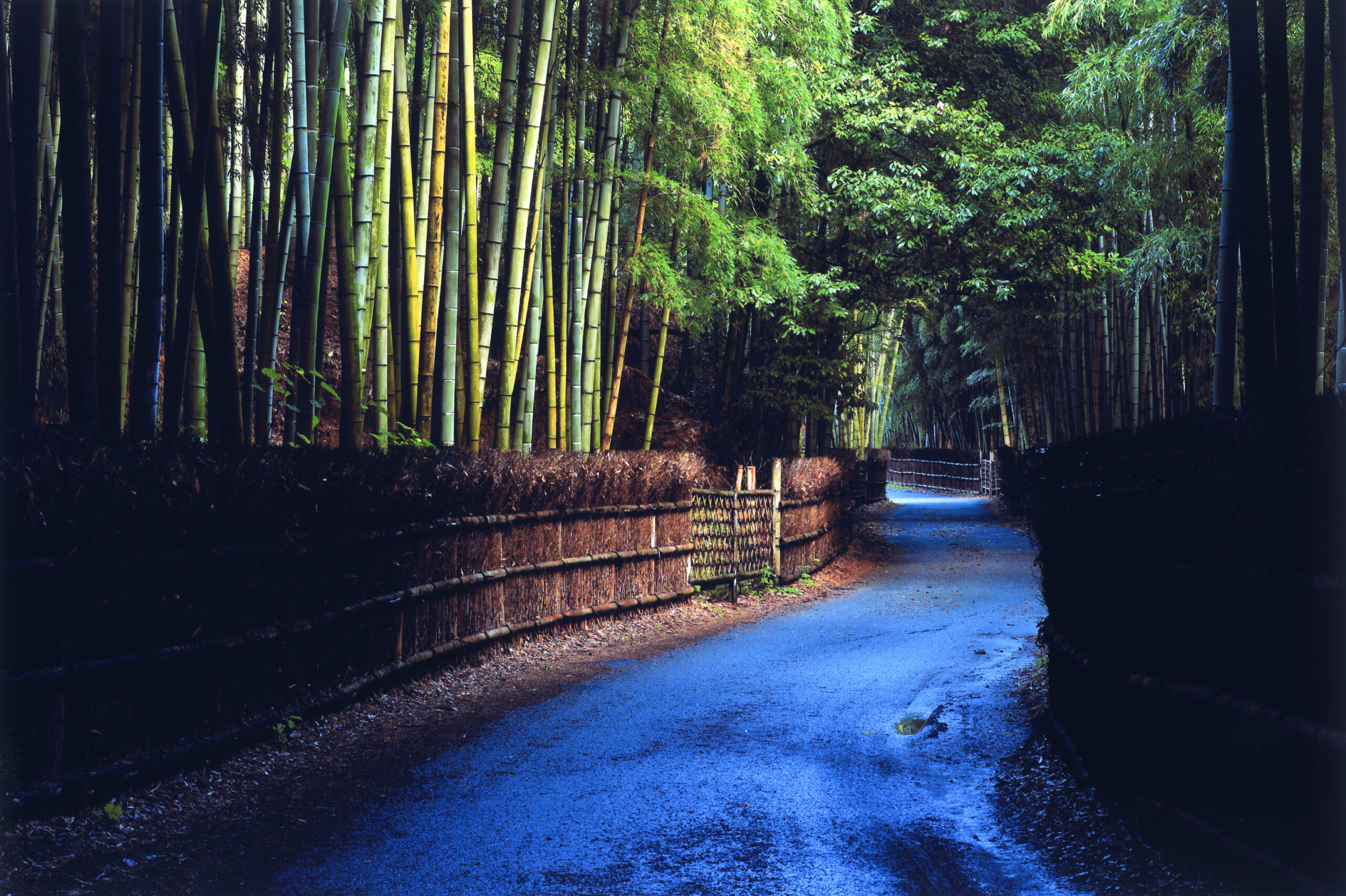
Bamboo shoots are one of Kyoto's specialty products, but the "Otokuni" area around Muko City and Nagaokakyo City is known for producing some of the highest quality bamboo shoots in Kyoto. Take-no-Michi (the Muko Bamboo Path) is located in the Muko hills in the northwestern part of Muko city and has a total length of about 1.8 km. The area has been improved since 2000 to preserve the scenery and promote tourism. Both sides of the road are lined by eight different kinds of bamboo hedge, including original creations such as “Takehogaki,” a hedge made of bamboo branches tied in bundles, “Kofungaki,” a hedge that looks like a rounded ancient burial mound, and “Kaguyagaki,” a hedge patterned after the neck of a 12-layered ceremonial kimono worn by Princess Kaguya, the protagonist of the folk story “The Tale of the Bamboo Cutter.” As a result, in recent years the path is has won numerous awards. In addition to receiving the "Handmade Hometown Award" from the Ministry of Land, Infrastructure, Transport and Tourism, it has been certified by the Japan Walking Association as one of the "500 Most Beautiful Japanese Walking Paths" and "Best 100 National Walking Paths." Further, the path is designated as a "Kyoto Scenic Asset” and a “Kyoto Cultural Landscape." Despite all the above, it is still a little-known tourist spot. You can enjoy a relaxing stroll through the bamboo forest away from the hustle and bustle while listening to the sound of the bamboo grass swaying in the wind and the chirping of small birds. Every autumn, a light-up event called "Bamboo Path / Kaguya-no-yube (Kaguya's Evening)" is held. More than 4,500 bamboo lanterns made of candles floating in bamboo tubes filled with water are lit all over the bamboo grove. Combined with the colors of the setting sun the sight is spectacular.
- Address
- Shibayama, Terado-cho, Muko City to Kyoto-Mozumecho Nagano, Nakakaido
- Access
- Bus: Take a bus from "Katsuragawa" station on the JR Kyoto line or "Rakusaiguchi" station on the Hankyu Kyoto line and get off at "Muko Kaisei Hospital", then walk for 10 minutes.
Take a bus from "Mukomachi" station on the JR Kyoto line or "Higashimuko" station on the Hankyu Kyoto line and get off at "Higashiyama", then walk for 10 minutes.
15 min. by bicycle
Chodo-in Park (Return rented bicycle)
3 min. walk
Hankyu Nishi-Muko Station
2 min. by train
Nagaoka Tenjin Station
3 min. by taxi
6Chatei Fu-an
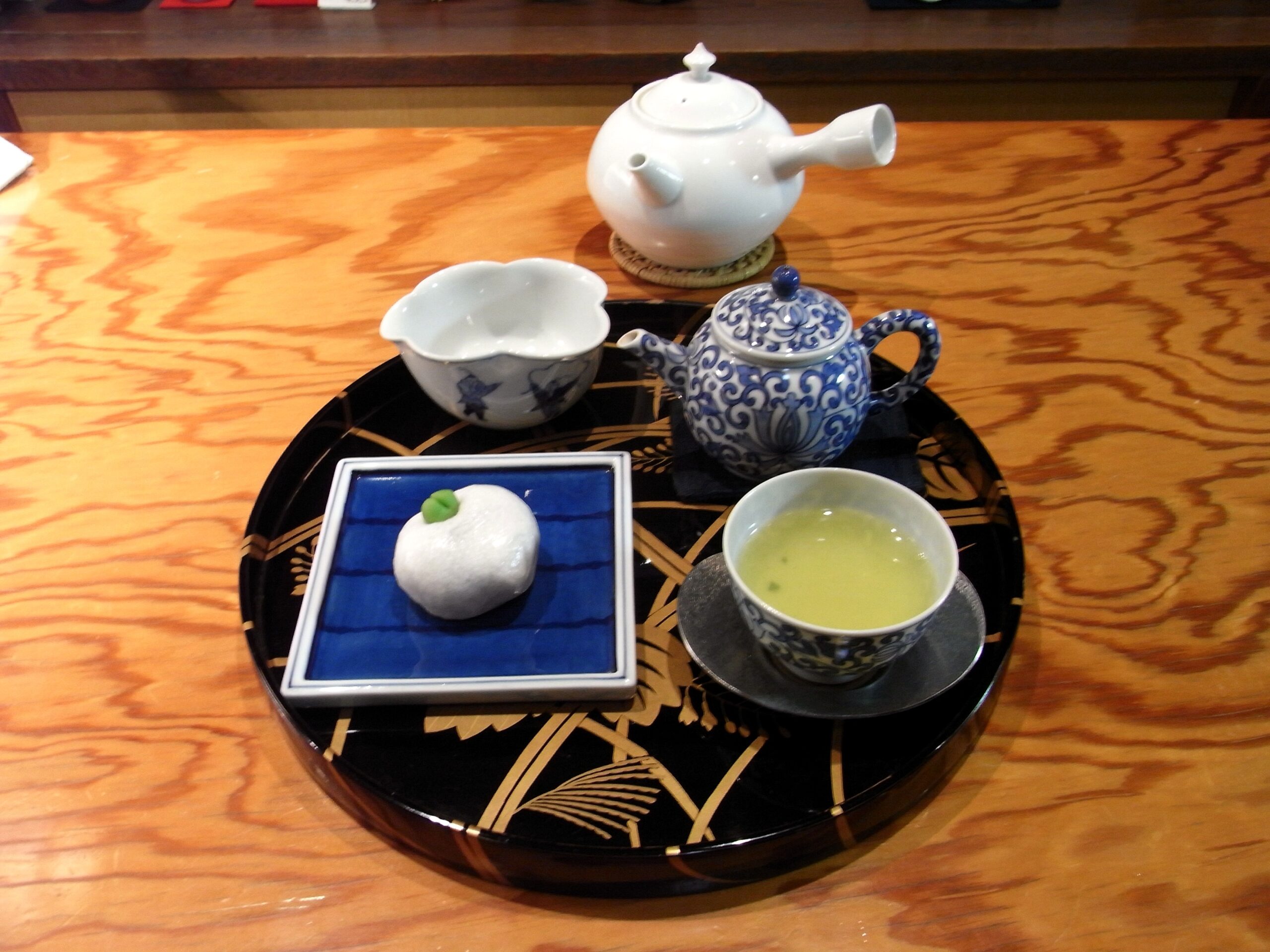
Established in 1995, Chatei Fu-an was the first tea boutique in the Otokuni Region of Kyoto Prefecture. It's accredited as an Uji tea café, and here you can find the kind of Uji matcha green tea, high-quality gyokuro green tea, medium grade sencha tea, select houjicha roasted green tea, and select genmaicha (tea with roasted rice) you can only find in a boutique. Each tea is carefully brewed for your enjoyment. Chatei Fu-an also offers a variety of original drinks and sweets made with matcha, and original dishes made with tea leaves.
- Address
- 1-2-18 Nagaoka, Nagaokakyo City, Kyoto Prefecture
- Access
- Train: 2 minute walk from Nagaoka-Tenjin Station on the Hankyu Kyoto Line
15 min. by taxi
7Yanagidani Kannon (Yokoku-ji Temple)

Yanagidani Kannon (Yokokuji Temple) is located in Nagaokakyo City, not far from Kyoto City and close to the famous Otokuni Bamboo Grove, where the main attraction is the eleven-faced, thousand-armed statue of the bodhisattva Kannon statue. The temple is built on the side of a mountain, and the inner temple building and main hall are connected by a long corridor surrounded by a Kyoto-designated scenic garden, Jodo-en. On the second floor is the Kamishoin Study, which was once a designated study room for elites during the Meiji era (1868-1912). These days, the study room and its beautiful view of the gardens is open to the public. The Yokokuji Hydrangea Path is a famous place to enjoy hydrangeas and inludes over 4,500 hydrangea plants that bloom in June and in the summer months. In autumn, the deep red carpet of the Kamishoin Study and bright red autumn foliage creates an impressive sight, open for viewing only on the 17th of each month. It's also widely believed that there is holy water ("oko-zui") at Yokoku-ji Temple connected to the famous Buddhist monk Kukai, and that this water is thought to heal diseases of the eye.
- Address
- 2 Donotani, Jododani, Nagaokakyo City, Kyoto Prefecture
- Access
- Train:
From Hankyu Nishiyama Tennozan Station, take Hankyu Bus to "Okukaiin-ji" bus top, then walk approximately 40 minutes or take a taxi for 10 minutes.
From Hankyu Nagaoka Tenjin Station, take Hankyu Bus to "Okukain-ji" bus stop, then walk approximately 40 minutes or take a taxi for 10 minutes.
Approximately 15 minutes by taxi from JR Nagaokakyo Station.
Car: About 10 minutes from the Nagaokakyo IC exit (on the Kyoto Ju-kando Expressway)
*On the 17th of each month there are shuttle buses from the east exit of Hankyu Nishiyama Tennozan Station and the west exit of JR Nagaokakyo Station (300 yen one way). The bus will depart once it is full, regardless of time. For more information please refer to the website (Japanese only) https://yanagidani.jp/access/
15 min. by taxi
8Bamboo shoot sweets
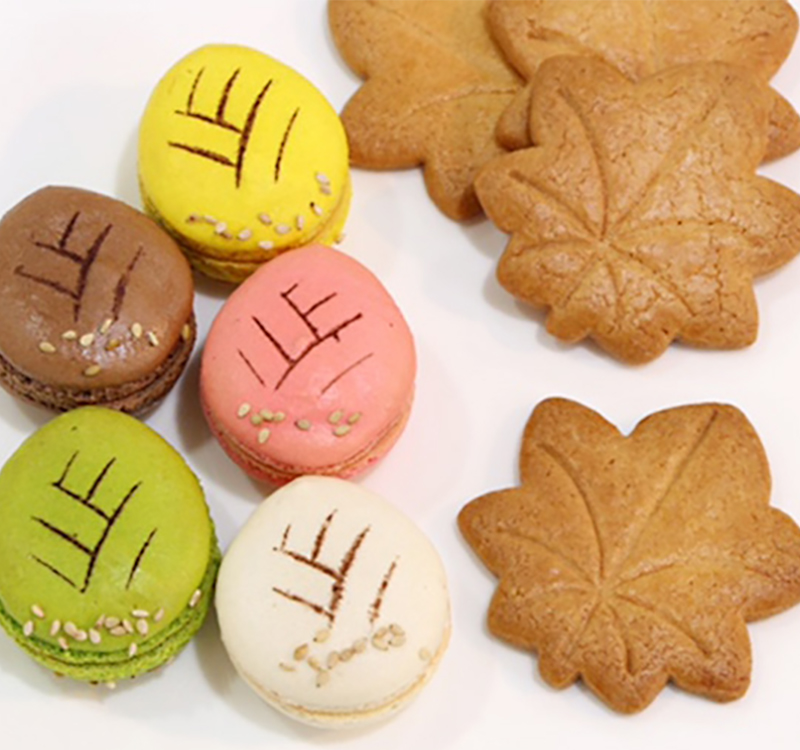
Bamboo shoot macaroons are a local Nagaokakyo specialty, a new kind of confectionery that looks just like the bamboo shoots it uses. They won the grand prize in the local Nagaokakyo sweets competition, and local cake and tea shops in Nagaokakyo are making bamboo shoot macaroons with their store's own unique twist. Enjoy these colorful bamboo shaped confectioneries and their different aromas and textures. You'll also find bamboo shoot flavored bean wafers, bean breads, and so on.
Cake House Nils
http://cakehouse-nils.com/
